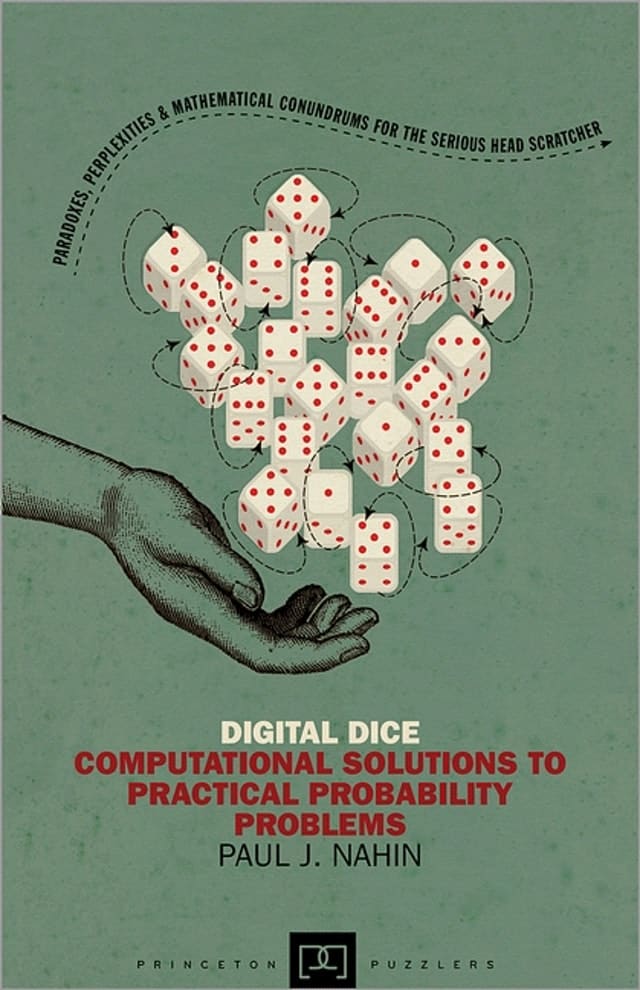“Some probability puzzles are so challenging that even the best mathematicians struggle with them. But even the most difficult of these issues can frequently be resolved using a computer and a Monte Carlo simulation, which uses a random number generator to imitate a real-world event like a million rolls of a pair of dice. The main goal of Digital Dice is to provide numerical solutions to challenging probability problems without the need to solve challenging mathematical equations.
Paul Nahin, a popular math author, challenges readers to find solutions to twenty-one challenging yet entertaining puzzles, ranging from figuring out the chances of coin-flipping games to understanding elevator behavior. Problems range in difficulty from the somewhat simple (determining if a dishwasher who breaks the majority of the dishes at a restaurant during a certain week is clumsy or just unlucky) to the extremely challenging (tackling branching processes of the kind that had to be solved by Manhattan Project mathematician Stanislaw Ulam). Nahin uses intriguing and peculiar historical narratives to illustrate the issues in his signature manner. For instance, readers discover that scientist Johannes Kepler chose his second bride by interviewing eleven women and learning how to choose the best ending point in any selection process.
The book gives solutions and line-by-line walkthroughs of MATLAB code for each issue and demonstrates how to construct basic computer codes in any popular programming language.
Anyone who appreciates computer technology or popular math will enjoy the game, Digital Dice. Nahin cleverly responds to some of the criticisms of the first edition in a revised introduction.”







